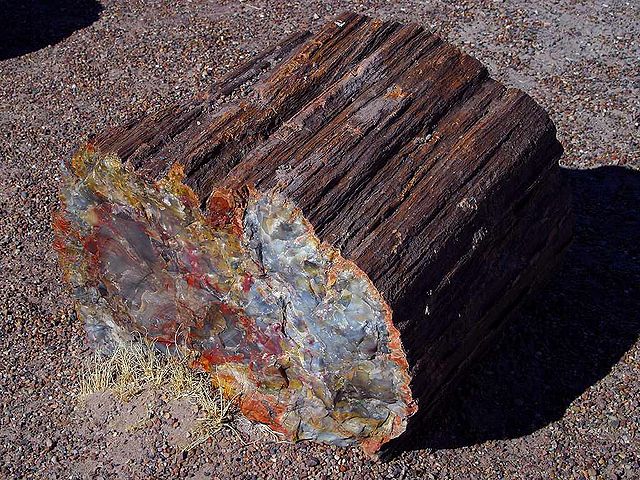Cherokee Ranch petrified forest
A large petrified forest thought to date to the Paleocene at around 55 million years old is located on and around the grounds of Cherokee Ranch in Douglas County, Colorado. These Denver Basin fossils include plants similar to the modern laurel tree family. At least 40 large petrified logs have been discovered on the Cherokee Ranch property; the castle on the ranch site includes more than 4,000 pieces of petrified wood in its construction.
A fossil from the Cherokee Ranch petrified forest
A piece of petrified wood in situ, Highlands Ranch, Colorado
Petrified wood, also known as petrified tree, is the name given to a special type of fossilized wood, the fossilized remains of terrestrial vegetation. Petrifaction is the result of a tree or tree-like plants having been replaced by stone via a mineralization process that often includes permineralization and replacement. The organic materials making up cell walls have been replicated with minerals. In some instances, the original structure of the stem tissue may be partially retained. Unlike other plant fossils, which are typically impressions or compressions, petrified wood is a three-dimensional representation of the original organic material.
Polished slice of a petrified tree from the Late Triassic Epoch (approximately 230 million years ago) found in Arizona. The remains of insects can be detected in an enlarged image.
Petrified log at the Petrified Forest National Park
Microscopic view of petrified Callixylon wood
Petrified wood mineralized with carnotite from St. George, Utah






